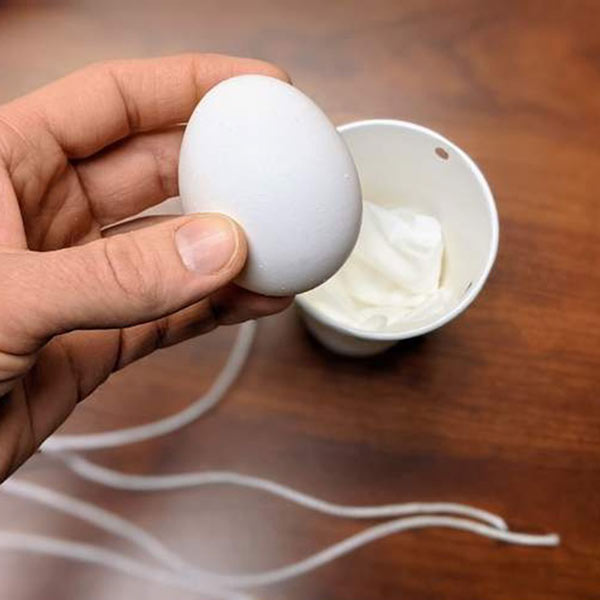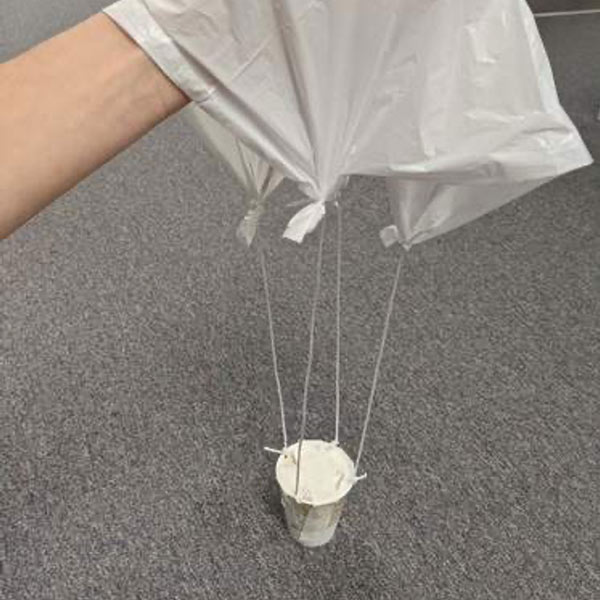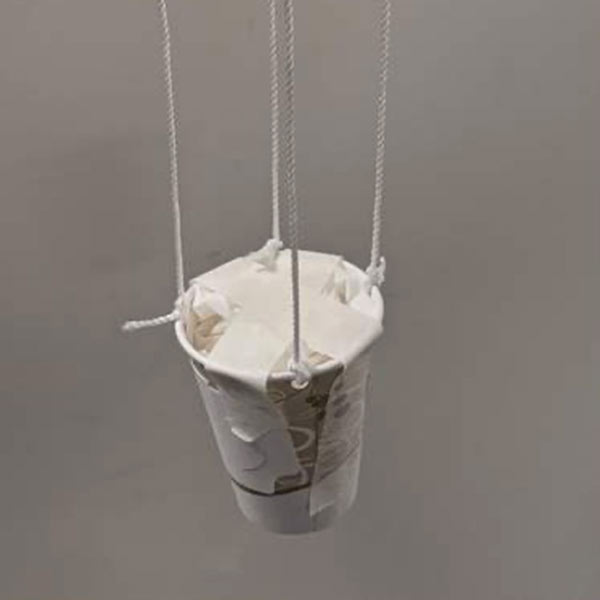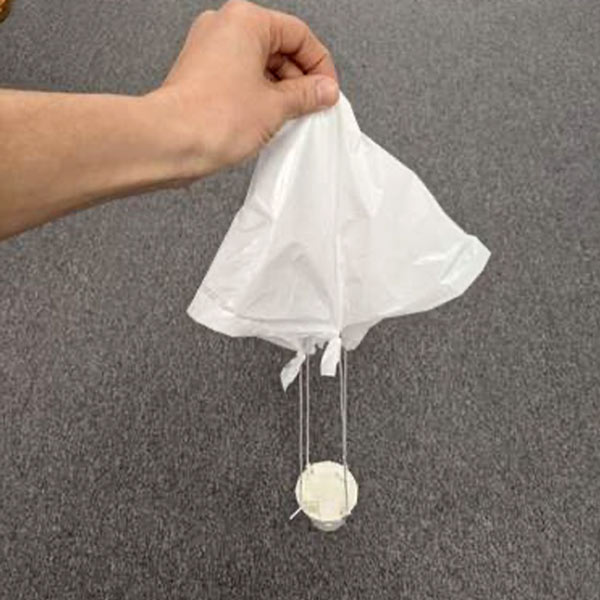Provided by: DeeDee Barnard and Tiffany Cooper
In this activity, you will explore basic concepts like gravity, force, and acceleration. Parachutes help slow down a falling object to give it a soft landing. They are a great way to give a delicate object a safe ride from a high spot.
If you’ve ever dropped an egg, you know that it easily breaks when it falls, and it makes a big mess! In this activity, you’ll learn how to harness the power of physics and air resistance to develop different parachute designs to discover a safe way to deliver an egg to the ground.

Prepare the egg cradle. Use a hole punch or another tool (i.e., scissors) to make four holes in the top of a cup. Then take a few tissues and wad them up before putting them in the bottom of the cup.

Make a parachute to test out of a plastic garbage bag. Use scissors to cut a square out of the bag. Cut four equal lengths of string. Tie a piece of string to each corner of the garbage bag square, then tie the four loose ends of the string to the four holes in the top of the cup.

Place an egg in the cup on top of the balled-up tissues. Then add a few more crumpled tissues and put masking tape across the top of each cup. Predict if the egg has a chance of surviving a fall from 10 to 12 feet.

Test your parachute by dropping it from a height (be careful) as you hold it from the top center of the parachute. (If any eggs break on the landing, make changes to the design to prevent any breaks the next time.)
After you have finished your experiment, challenge yourself to improve your design or try three different sized parachutes to see which one works the best! Time each parachute’s flight and record the data. (We recommend trying sizes: 10” x 10,” 20” x 20,” and 30” x 30”)
Adapted from: The Gazette; KIDSGAZETTE; January 4, 2021; https://www.thegazette.com/subject/kids/kids-articles/try-it-egg-drop-parachute-challenge-20210104 ; By Iowa State University Extension and Outreach — Linn County 4-H Youth Development.